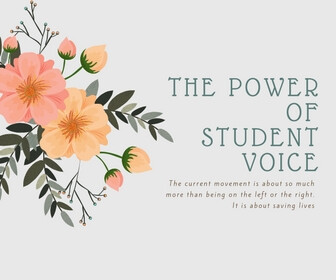In his book Start with Why (2009), Simon Sinek explained that every organization knows what they do, some organizations know how they do it, but very few organizations know why they do what they do. That last part, knowing why an organization does what it does, creates the mission of the organization. How that mission is carried out on a day to day basis will create the culture.
School leaders who want a culture of high expectations and trust for their school need to find time to commit to building such a culture starting with defining the why for the school in collaboration with staff. The following process can help create an inclusive school culture that originates from all staff, not just school administration.
Please note, building a culture takes time, and rushing the process can jeopardize successful results. For some schools these steps might take a year to complete, but if culture is vital to school success, then it is important to find the time to focus on culture with intentionality and fidelity.
Step 1: Building a Unified Purpose
During a staff meeting, ask your team to help build a purpose statement- a statement of why the school exists. Start by asking, “Why does this school exist? In the ideal world, what should students get from attending this school and being part of our school community?” Ask staff to individually write words that come to mind on a slip of paper per word. For example, words such as “literate,” “empowered,” and “self-respect” might be written by some staff.
After staff have had time to write words individually, break them into small groups to discuss what they wrote and to see if they had any similar words that could be clustered together. Ask them to write these down on chart paper. For example, words like “self-respect” or “fairness” might be clustered together. As the small groups go through their individual words and cluster them by likeness, ask the groups to give each cluster a title. For example, the cluster of “self-respect” and “fairness” could be labeled “character.”
After each group has labeled clusters, have them share out to the whole group and post their chart paper in an area where it can be seen by all. After each group has presented, facilitate a group conversation to identify similarities that can be found across all the different chart papers. Write these similarities on a separate chart paper, and then ask the entire team, “It appears these are areas that the entire school team finds important. By giving a thumbs-up, can we agree to be in consensus that these items are part of the purpose of the school?” If there are participants who do not raise a thumb up, provide time for them to discuss their reasoning. It is important that everyone agrees to these items before moving forward. It might take additional time or additional days of professional development, but the discussion is crucial and makes for good professional dialog about why the school exists and what the ultimate goals is of staff and students.
If possible, try to create a purpose statement using the agreed upon words. If not, list the words in a visibly pleasing format. Either way, place the statement or words throughout the school so they are visible and can be referenced throughout the year.
Step 2: Visualizing the Purpose in Action
Once the school team has agreed to key clusters that describe the purpose of the school, ask the staff these questions, “If this describes our purpose, what would we see the students doing if we were achieving our purpose? Individually think and list overt actions we would expect to see our students doing if we achieved our purpose. What evidence would we have that they are doing it?” For example, if “character” is a key cluster, what would it look like if a student was exhibiting that trait? It could be a student saying thank you, or one student helping another student put trash in the garbage. Have teachers in groups or grade-level teams list overt actions on chart paper that students would be doing for each agreed upon cluster.
Ask teachers to state these expectations in a positive manner. For example, instead of “not running” say “regularly walking.” Also ask the teachers where these expectations will be observed. Classroom? Bathroom? Playground?
Once each group is done, have them share what they wrote with the entire team and then identify similarities across each group.
Next ask the teachers this question, “If we expect to see these behaviors from our students, then what do teachers need to expect from themselves and their peers in order to create the environment for students to act this way?” Again, have teachers in groups come up with overt actions teachers need to take in order to create the environment for students to act in the ways previously identified. Have the groups write teacher expectations per cluster on chart paper and share with the entire staff. Take the time to point out similarities and differences and be prepared to discuss any items that were written that the team doesn’t seem to agree upon. For example, one team might write that teachers need to be accessible, even afterschool. A teacher who is a single parent might feel that is not something they can agree upon. In this case, facilitate the conversation among the group to come to consensus on ways all teachers can be accessible to students.
Once the teachers agree to what they need to expect from themselves and their peers to reach the school’s purpose, ask the following question: “For teachers to meet these expectations, what would you expect from school leadership?” Remind teachers to be realistic, as items such as “I expect them to give me a raise” might not be a viable option. Items like “it would be great to have more time in our schedule to discuss student data” or “I’d like to see the principal in the halls more just saying hi to the students” are more practical expectations. Following the same pattern as before, have the groups write the school leadership expectations per cluster on chart paper and share with the entire staff. Ideally, the school leadership or representatives from the school leadership team will be present when this is shared out and can commit to some items that the team has asked for. This will show the school team that the culture of the school is everyone’s responsibility, and that means leaders should hold themselves to expectations as well.
Step 3: Reinforcing Accountability and Recognition
Once the expectations are created and agreed upon for students, teachers and school administration, have the team identify ways to hold each other accountable and to reinforce these behaviors. For example, if we expect students to use polite vocabulary, how will we hold them accountable and reinforce the positive behavior when we hear it? How will we hold teachers accountable and reinforce the positive behavior in our peers? How will the administration be held accountable and be reinforced as well?
Using the example above, under the “character” cluster teachers might expect students to use positive language. One identified way of reinforcing that behavior in students could be to personally thank students each time they use positive language and write their name on a slip which then goes into a monthly drawing. A teacher expectation is to model using positive language in the classroom by verbally praising each student at least once daily, to make sure to thank students for using positive behavior as well as writing their name on the slip to be entered in the drawing. Teachers can hold themselves accountable by ensuring every child has at least two slips in the drawing. Teachers can also agree that when they see their peers using positive language with students, they can recognize one another at meetings and exhibit that behavior. The administration will then share with the school, the district and the school board all the ways during the month that students and teachers exhibited the “character” expectation.
Culture One Day at a Time
In time, by identifying a uniform purpose, expectations to meet that purpose, and ways to hold people accountable and recognize when those expectations are being met, a new culture will begin to emerge within the school. In order to keep the culture growing, each year as staff come and go it is important to address this culture-building process and make new staff a part of it. Like other school improvement efforts, culture does not have a finish line and needs to be part of the continuous improvement efforts on a regular basis.
Oran Tkatchov is the co-author of Success for Every Student – A Guide to Teaching and Learning. His educational career has included such roles as a middle school English teacher, high school English teacher and charter school director. For over a decade he directed and provided professional development in the areas of special education and school/district improvement at the Arizona Department of Education. He currently supports professional learning at the Arizona State Schools for the Deaf and the Blind.
Oran Tkatchov is the co-author of Success for Every Student – A Guide to Teaching and Learning. His educational career has included such roles as a middle school English teacher, high school English teacher and charter school director. For over a decade he directed and provided professional development in the areas of special education and school/district improvement at the Arizona Department of Education. He currently supports professional learning at the Arizona State Schools for the Deaf and the Blind.








